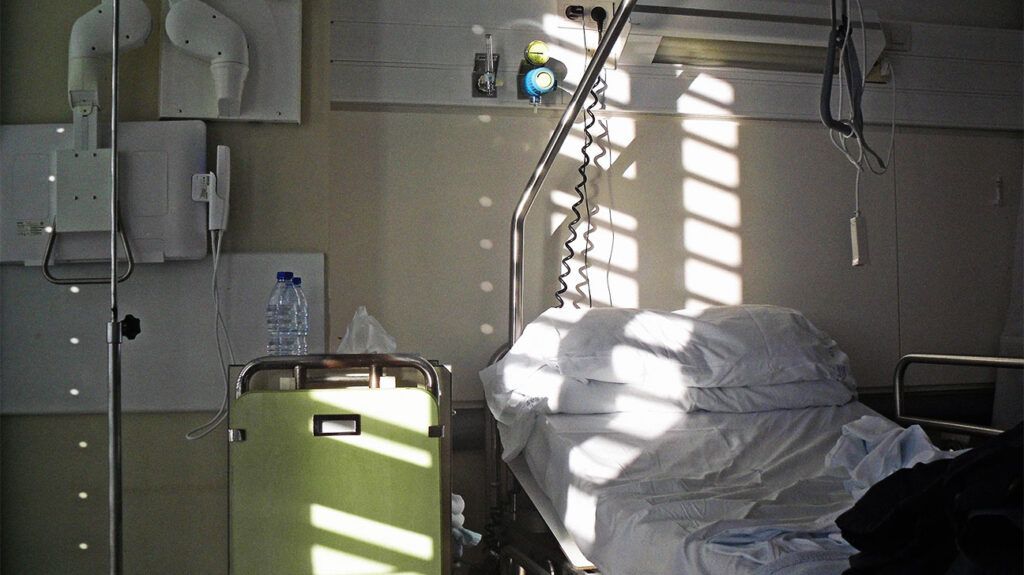Disuse osteoporosis is when a loss of bone mass occurs due to a person not putting enough weight, stress, or pressure on the bones over a period.
It is typically due to a restriction in mobility that a person may be experiencing. For example, if they have an injury or health condition that hinders movement or if they are on bed rest.
Osteoporosis is a bone disease that weakens the bones and reduces bone mass, which can leave bones fragile and more likely to fracture or break.
This article will discuss disuse osteoporosis, symptoms a person may experience, causes and risk factors, and available treatment options.

Disuse osteoporosis refers to a loss of bone mass that
The bones in a person’s skeleton are constantly changing. The skeleton goes through a bone remodeling cycle that occurs continually throughout life. During this cycle, the body reabsorbs old bone and replaces it with new bone.
An older
Not bearing weight and applying enough stress or pressure to bones is a major risk factor for a person developing disuse osteoporosis.
This condition can lead to bone fragility, bone mass loss, and an increased chance of a bone fracture or break.
Osteoporosis, which includes disuse osteoporosis,
However, there are some signs of disuse osteoporosis a person can look out for, including:
There are several reasons why a person may not bear enough weight or apply enough stress or pressure on the bones.
Some possible causes
- being on bed rest
- lack of mobilization due to a spinal cord injury
- lack of mobilization due to a neuromuscular condition
that affects the communication between the nerves and the muscles - excessive weight loss after bariatric surgery
- lack of physical activity due to other health conditions
- reduction of limb mobility following a stroke
- traveling into space
To diagnose disuse osteoporosis, a doctor may first ask about a person’s medical history and perform a physical examination. They may ask questions about:
- any movement restrictions
- current or previous fractures
- family history of osteoporosis
- current or past health conditions
- a person’s lifestyle
A doctor may also perform tests to help measure bone density and bone mass loss. The
During DXA, a doctor will scan the body to measure the density of bones in the skeleton. The most reliable way to diagnose disuse osteoporosis is to scan the hips and spine.
A doctor may also perform a quantitative ultrasound of the heel to measure bone loss.
Research suggests that weight-bearing and resistance exercises
A
Making sure a person consumes enough calcium and vitamin D can help strengthen bones and reduce the rate of bone loss.
There are several medications available to treat disuse osteoporosis,
- bisphosphonates, which can help maintain bone density
- selective estrogen receptor modulators (SERMs), which is a type of hormone replacement therapy that can help maintain bone density and reduce the risk of a fracture
- parathyroid hormone, which can stimulate cells to produce new bone
- biologic medications, such as denosumab, which
slows down bone loss, and romosozumab, which also helpsincrease bone formation.
Disuse osteoporosis is a loss of bone mass and bone density due to a reduction in mobility. If a person cannot apply frequent weight, stress, or pressure to the bones, this can result in disuse osteoporosis.
This condition may not present with any symptoms until a person fractures or breaks a bone. Some signs of disuse osteoporosis may include easily breaking or fracturing bones, a loss of height, and changes in posture.
A person may develop disuse osteoporosis if they have an injury or illness that reduces mobility, such as a spinal cord injury or a neuromuscular condition.
Treatment for disuse osteoporosis may include weight-bearing and resistance exercise, taking medications as prescribed by a doctor, and consuming enough calcium and vitamin D.
